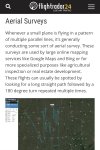Moderator note - split from
 www.railforums.co.uk
www.railforums.co.uk
The lines do need to be checked. I wonder if some use of modern technology could be considered. I’m thinking a drone following the line to check for obstructions. With AI to detect potential obstacles. A drone version of the New Measurement Train.
Obviously it would a first once over, with the first train proving the route properly if no obstruction was found.
Just a thought.
Storm Darragh - 6/7th Dec
Amber wind warnings now issued by the Met Office, would expect some disruption if it plays out as forecast. Fortunately it doesn't look too wet, apart from in the welsh highlands. Gusts of 70 to 80 mph are likely around exposed coasts and headlands, where some very large waves are likely...
The lines do need to be checked. I wonder if some use of modern technology could be considered. I’m thinking a drone following the line to check for obstructions. With AI to detect potential obstacles. A drone version of the New Measurement Train.
Obviously it would a first once over, with the first train proving the route properly if no obstruction was found.
Just a thought.
Last edited by a moderator:


